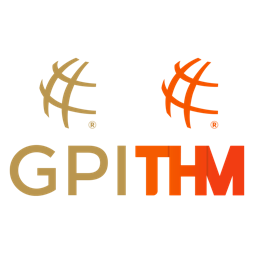About The Rankings
The GPI Player of the Month (PoM) is announced at the beginning of each month on GlobalPokerIndex.com. The GPI PoM acknowledges the player who had the strongest performance in live tournaments over the course of the previous month.
GPI Player of the Month: The Details
The GPI Player of the Month is the live tournament poker player with the highest score in that month based on finishing in cash positions in qualifying tournaments occurring during that month. A cash position is any position where the player receives a portion of the total prize pool for their performance in an event. Typically the top 10% to 20% of the participants in an event finish in a cash position. Qualifying tournaments are events with 21 or more players and a buy-in of $1000 USD (or other currency equivalent) or higher that are open to the public, and are not specialty or selected audience events such as charity, seniors, doubles, satellite, women, team, employee, executive and CEO events. Each player’s individual GPI PoM score is an aggregate of scores in events during the month. The score for a given event is derived from a combination of their finishing place percentage and buy-in factor (no aging factor is applied to the GPI PoM score, unlike the GPI 300). Finishing percentage refers to the percentage of the starting field a player bests in his or her finish. Buy-in factor refers to the relative amount of the event buy-in to the baseline buy-in of $1500 USD (all references to buy-in are inclusive of entry fees). A score is considered to fall within the month where the event begins.
Finishing Percentage Factor
The GPI Player of the Month uniquely takes into account finishing place relative to total field size for an event. The GPI PoM finishing score is expressed as the finishing position relative to field size of the tournament. The base finishing score is calculated as the percentage of the field that is bested by a given player. This means that the relative percentage change in base finishing score between any two places is different depending on number of entrants. The higher the number of entrants in an event, the smaller the percentage change between the base scores for, as an example, a first and second place finish. The lower the number of entrants for an event, the larger the percentage change in base score between a first and second place finish, or any other places in comparison to each other. A field size cap is applied at roughly the 99th percentile of qualifying events to ensure that events with extremely large field sizes do not skew the overall GPI PoM score. For any event with a field size larger than the field size cap, the field size cap is used to calculate the score rather than the actual field size number. Administration to determine the cap on field size is performed at the beginning of each calendar year based on events that occurred in the prior year. For 2013 the field size cap is 2,800.
Buy-in factor
The buy-in factor used in creating an individual event score is based on the buy-in for the event relative to the baseline buy-in for events, $1500 USD. This factor addresses the concept of relative difficulty for the event. Larger buy-in events presume that the difficulty of the field is greater because more elite players enter higher buy-in events.
The GPI PoM takes into account the concept of diminishing returns on the buy-in to an event – that the percentage increase in buy-in between a $1000 and $2000 event is much greater than the increase between a $20,000 and a $20,500 buy-in. The GPI PoM captures this concept of diminishing returns by using a logarithmic function.
A buy-in cap is applied at roughly the 99th percentile of qualifying events to ensure extremely high buy-in events do not skew the overall GPI PoM score. For any event with a buy-in larger than the buy-in cap, the buy-in cap is used to calculate the score rather than the actual buy-in amount. Administration to determine the cap on buy-ins is performed at the beginning of the calendar year based on events that occurred in the prior year. The buy-in cap for 2013 is 25,000 USD.
Individual Event Score Calculation
To calculate an individual event score, the GPI PoM program multiplies the Finishing Percentage Factor and the Buy-in Factor. The product of this calculation is the GPI PoM score for the given player in the given event.
GPI Player of the Month
The GPI Player of the Month is the player with the largest composite score. Each player’s composite score is the sum of all individual event scores.
